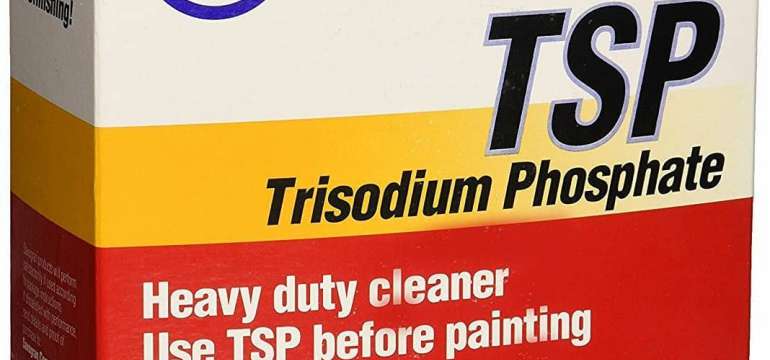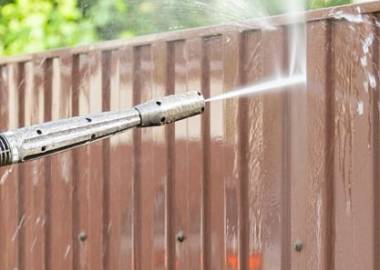When you are painting steel siding, there are a lot of facts you need to keep in mind. You have to know how to paint steel siding, the best paint to use, and how to prepare it for the paint. This information is essential to know even if you have pre-finished metal siding.
Pre-finished metal siding is siding that has already been painted and, while this coating lasts a long time, it will eventually erode away. When this happens, the metal is exposed to the elements and will start to eventually rust. The first sign that this is beginning to happen is a loss of the glossy look that new siding has. This is followed by fading and thinning of the color.

Rusted metal siding.
Since any of this is clearly bad for your metal siding, it is vital that you re-paint your metal siding. Do this as soon as any spots start to show the steel underneath, or do it a little sooner if you are trying to sell your house and need it to look presentable.
How to get ready to paint on steel siding
The actual part of painting the metal is simple, but before you can paint, you first need to prepare it for the paint. First, you have to get all of the rust, peeling paint, and anything of that nature off. There are a few different methods of doing this, depending on how good of a job you want to do, how much time and energy you have, and how large of an area you are doing.

If you are striping a small area, then you can do very well with a bucket of water that has some bleach and TSP in it. The TSP and the bleach will help break down the paint, though you should never touch either with your bare hands and always wear gloves. Use an abrasive pad or a sponge that has a rough side to it and scrub away, and when you are done, rinse the area thoroughly.
 Another option is to use a pressure washer. Since you do not want to damage the metal, it is best to start with a lower setting, and to move to a higher setting is needed once you see how it affects the siding. This is a great option to use if you have to do the whole side of a house or an equally large area.
Another option is to use a pressure washer. Since you do not want to damage the metal, it is best to start with a lower setting, and to move to a higher setting is needed once you see how it affects the siding. This is a great option to use if you have to do the whole side of a house or an equally large area.
If you decide to use a pressure washer, there are a couple of things that you will need to keep in mind if you are doing this to the side of a house. Make sure before you start that the windows are tightly caulked if you will be pressure washing anywhere near them or they will leak. You will also want to remove any shutters or anything that might be in the way so that you can pressure wash everything. Lastly, for the best results, hold the wand at a downward angle where possible.
What’s more, perhaps the best option of all is a random orbital sander with a 100 grit disk on it. This setting easily gets all of the paint off of the bare metal. The holes in the disk suck in the dust, which makes for a quick cleanup and, while this option will take time to do, it will give the best results.
After the paint has been stripped off, you should then feel around for any chalky areas. If you can wipe your hand over an area and get a chalky white powder on your hand from doing so, then you will have to do something about it. A pre-paint cleaner can help to get this off if you can’t seem to remove it any other way.
Once you are done cleaning your siding, you need to let is completely dry. Then you can start painting it just as you would paint anything else.
What is the best paint to use on metal siding?
 The paint that you choose will depend somewhat on how well you prepared your metal siding to receive the paint and what the surface of it looks like. If you did not do a good job of scraping off the old paint or there is chalking that you can’t get to come off, then you should first paint with a primer.
The paint that you choose will depend somewhat on how well you prepared your metal siding to receive the paint and what the surface of it looks like. If you did not do a good job of scraping off the old paint or there is chalking that you can’t get to come off, then you should first paint with a primer.
A solvent-based primer that is specifically for metal and will help prevent rust is usually the best way to go for this, especially in areas that come into contact with rain or other moisture.
After the primer has been applied and allowed to dry, then it is time to paint! Choose an exterior paint that is preferably water-proof. There are specific paints which are designed for use on outdoor walls and roofs, so it is best to go with one of these.
- How to Cut Lexan - September 25, 2020
- Mineral Spirits vs. Mineral Oil - September 25, 2020
- Shellac vs. Polyurethane - September 24, 2020
